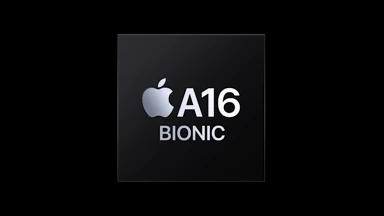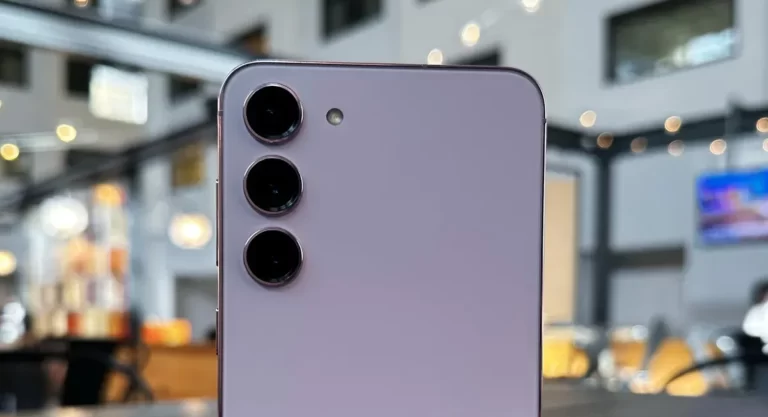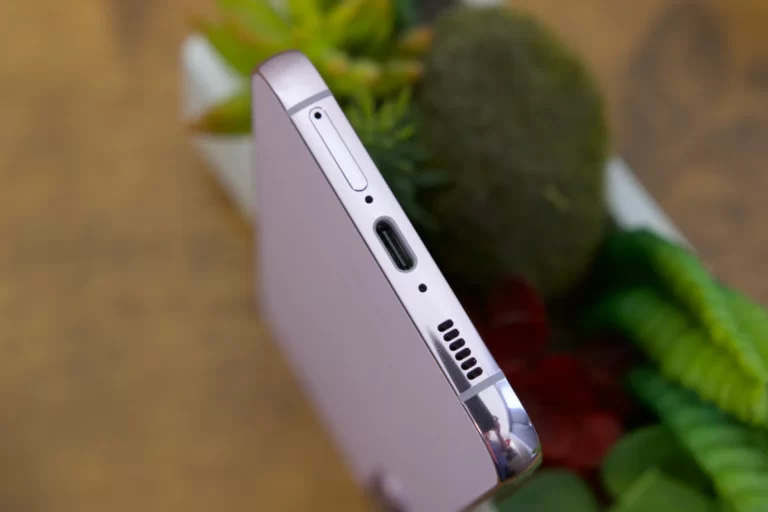The iPhone 15 Plus and Samsung Galaxy S23 Plus are two high-end smartphones with advanced features. In this article, we’ll take a look at their screens, performance and features, so you can choose the one that best suits your needs.
Higher resolution for the iPhone 15 Plus, but higher refresh rate for the Samsung Galaxy S23 Plus.
The iPhone 15 Plus features a 6.7″ OLED Super Retina XDR display with a resolution of 2,796 × 1,290. The Dynamic Island, present on the iPhone 14 Pro and Pro Max, replaces the notch at the top of the screen and provides information at the surface of the device.

The Samsung Galaxy S23 Plus features a 6.6-inch Dynamic AMOLED 2X display with Full HD+ (2340×1080) resolution. Although slightly smaller, the AMOLED screen offers vivid colors and sharpness. What’s more, its refresh rate can reach 120 Hz, offering a smoother, more responsive experience.
The powerful chips of both smartphones guarantee exceptional performance.
The iPhone 15 Plus is equipped with the A16 Bionic chip, exclusive to iPhone Pro models of the same generation. This chip features a 6-core processor and a 5-core GPU, offering optimized performance and increased energy efficiency thanks to its 4 nm construction.

The Samsung Galaxy S23 Plus is powered by Qualcomm’s Snapdragon 8 Gen 2, accompanied by the Adreno GPU. Both chips offer advanced graphics performance, but Apple’s A16 Bionic stands out for its superior memory bandwidth.
Features: advanced functionalities for both smartphones.
Both smartphones offer advanced features such as support for graphically intensive games and a smooth user experience. However, each brand also offers exclusive features that may influence your final choice.
Cameras
One of the most important aspects of a modern smartphone is the quality of its camera.

Main camera resolution :
The iPhone 15 Plus shines with its 48-megapixel main sensor, a significant improvement on its predecessors. This higher resolution captures finer details and sharper images. What’s more, it also comes with a 12 MP telephoto lens for high-quality optical zooms.
Samsung has pushed back the limits of resolution with the Galaxy S23 Plus, which offers a 50 MP main sensor. This configuration also enables a wealth of detail and exceptional sharpness in every shot. What’s more, the 10 MP telephoto lens and 12 MP ultra-wide sensor offer additional versatility for capturing different types of photos.

Low-light performance:
When it comes to taking photos in low-light conditions, both the iPhone 15 Plus and the Galaxy S23 Plus do quite well. However, it’s important to note that the quality of both devices may be slightly impaired in low light. In brighter situations, both cameras deliver impressive results with sharp details and vivid colors.
Battery and connectivity:
The Samsung Galaxy S23 Plus offers a 4,700 mAh battery with 45W fast charging. The iPhone 15 Plus, meanwhile, appears to retain the same battery capacity as its predecessor, at around 4,325 mAh. We expect both phones to have similar autonomies.

Apple recently made the expected switch from Lightning to USB-C, which brings the iPhone 15 Plus up to date in terms of connectivity. USB-C enables much faster data transfer speeds, making it easier to share files and synchronize with other devices.
The Samsung Galaxy S23 Plus follows suit with its USB-C port, offering convenient connectivity for fast data transfers. This means that users of both handsets can enjoy the convenience and speed offered by USB-C.
Verdict: Make your choice according to your priorities.
Choosing between the iPhone 15 Plus and the Samsung Galaxy S23 Plus will depend on your preferences in terms of screen, performance and functionality. If you’re looking for higher resolution and integration with the Apple ecosystem, the iPhone 15 Plus is an excellent choice. On the other hand, if you prefer a higher refresh rate and greater flexibility with the Android operating system, the Samsung Galaxy S23 Plus is worth considering.
Both the iPhone 15 Plus and the Samsung Galaxy S23 Plus offer impressive camera performance, with high resolutions and quality results in low-light conditions. In terms of connectivity, both devices have adopted USB-C, offering greater ease of use and faster data transfer speeds.
Related:
- Duel between Iphone 14 and Nothing phone 2
- Is the Rog Phone 7 Ultimate better than the iPhone 14 Pro Max?
